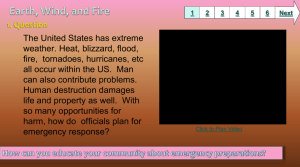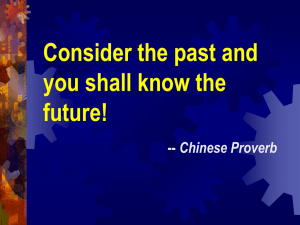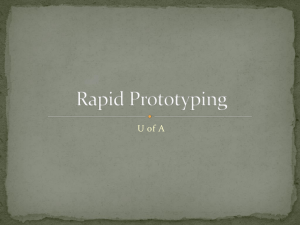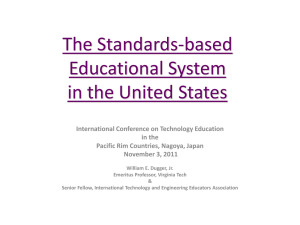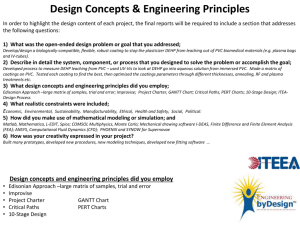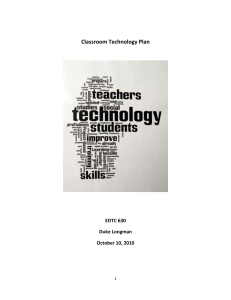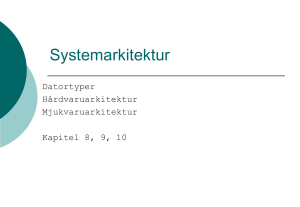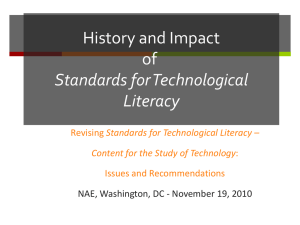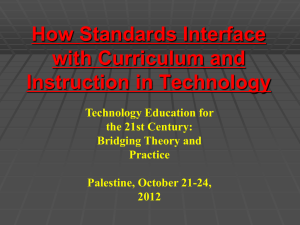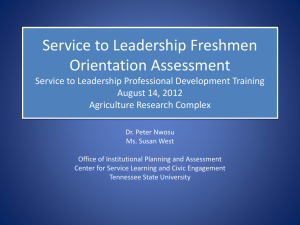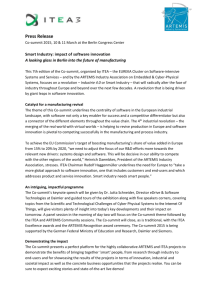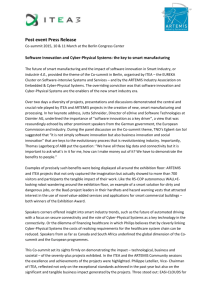Setting Higher Standards for Our Discipline
advertisement
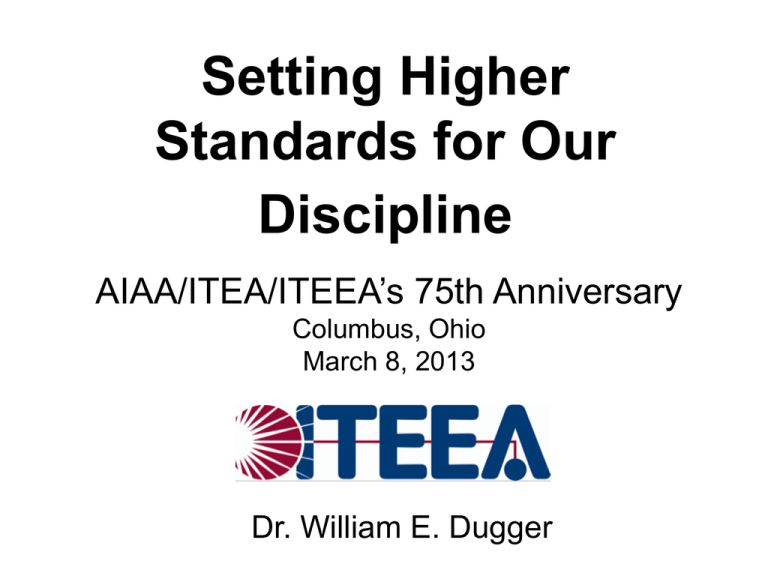
Setting Higher Standards for Our Discipline AIAA/ITEA/ITEEA’s 75th Anniversary Columbus, Ohio March 8, 2013 Dr. William E. Dugger 1978-81 •Standards for Industrial Arts Curriculum Project •(Funded by the U. S. Office of Education to the Technology Education Program at Virginia Tech.) Major Objectives of the Standards for Industrial Arts Curriculum Project • • • To develop a database on industrial arts programs and on industrial arts student organization activities as an integral part of the industrial arts instructional program. To develop a set of standards and related handbooks for ensuring quality industrial arts programs. To familiarize, publicize, and demonstrate the standards developed for industrial arts programs. Standards for Industrial Arts Curriculum Project • The “Standards for Industrial Arts Curriculum” were revised in 1985 and retitled “Standards for Technology Education”. •(This was funded by the Technical Foundation of America and published by Goodheart-Willcox Publisher. The new Standards were distributed by ITEA.) 1985 • The American Industrial Arts Association (AIAA) changed its name to the International Technology Education Association (ITEA). The Movement to Generate Nationally Developed Standards Began in the 1980’s • • • • • • Curriculum and Evaluation Standards for School Mathematics, (NCTM, 1989). Benchmarks for Science Literacy, (AAAS, 1993). National Science Education Standards, (NRC, 1996). Standards for Technological Literacy, (ITEA, 2000). Also, about a dozen other Standards were nationally developed in the 1990’s. The American Industrial Arts Association (AIAA) changed its name in 1985 to the International Technology Education Association (ITEA) Technology for All Americans Project (1994-2005) 1. Funded by The National Science Foundation (NSF) and The National Aeronautics and Space Administration (NASA). 2. A Rationale and Structure for the Study of Technology (R&S)(ITEA, 1994-1996 (Revised in 2006 as a CD). 3. Standards for Technological Literacy: Content for the Study of Technology (STL) (ITEA, 19962000)(Revised and reprinted in 2002 and 2007). 4. Advancing Excellence in Technological Literacy: Student Assessment, Professional Development, and Program Standards (AETL)(ITEA, 2000-2005). Additional TFAAP Research Activities in 2000-05 • • • • The Status of Technology and Engineering Education in the U. S. (ITEA/ITEEA, 2001, 2004, 2007, 2011). ITEA/Gallup Polls (2001 & 2004). Addenda. Briefings. Facts about STL • • • • • Used in 41 states in U. S. (ITEEA, Status Study,2007.) STL has been translated into Japanese, Finnish, German, Chinese, and Estonian. AETL has been translated into Japanese. NAEP 2014 Technology and Engineering Assessment used STL in their framework. Palestine has adopted STL as the content organizer for their mandatory curriculum in grades 5-10. STL cites Engineering over150 times, Science over 60 times, and Mathematics over 50 times. The Future • • Standards are dynamic and need periodic revision Other major standards that have been revised or are new: • • Mathematics: NCTM - 1989 ➤ 2000. • Next Generation Science Standards: NRC - 1996 ➤ 2013 (This includes Engineering Design, Technology, and the Applications of Science as one of the four domains). • • Common Core Standards for Mathematics: CCSSO/NGA, 2011. Engineering - No Standards. STEM - No Standards. Revision of STL • • Two proposals have been developed and sent to NSF by ITEEA to fund the revision of STL. Both proposals were not funded. The National Academy of Engineering (NAE) has developed a draft of a project outline to seek funding to create a new Conceptual Framework for K-12 Engineering and Technology Education (this includes STEM). Such a framework could be used to guide a revision of STL. Thank you! • • • • • • • ITEA/ITEEA TfAAP Staff Advisory and Focus Committees Thousands of Reviewers NSF and NASA NAE, NRC, NSTA, NCTM, AAAS, and many others The Profession and You! Happy ITEEA Resources on this presentation •PowerPoint -http://www.iteea.org/Resources/PressRoom/2013/Mar/ SettingHigherStandards.pdf •Standards -http://www.iteea.org/TAA/Publications/TAA_Publications.html
